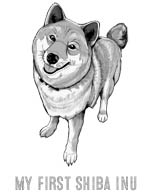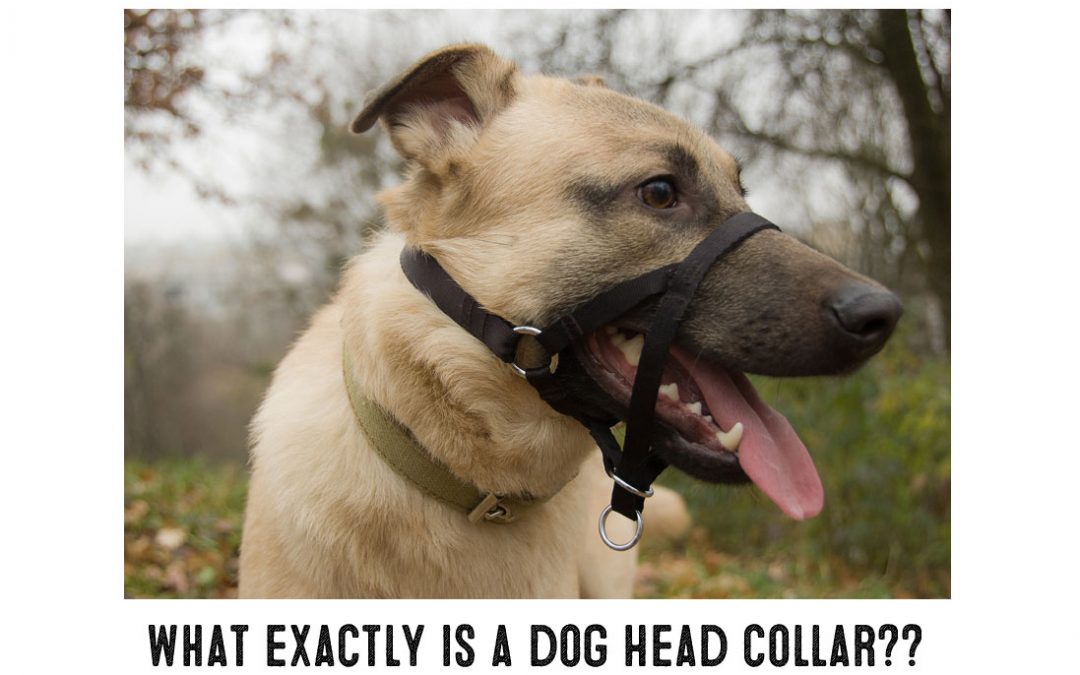On occasion, our posts contain affiliate links. However, we only recommend products that we truly believe in. For more information, visit my privacy policy page.
Does your dog drag you around the neighborhood during their daily walks?
Do you ever get that nagging feeling that your dog is walking you, rather than the other way around?
A dog that pulls on the leash, whether out of fear, exuberance, or sheer strength, is one of the most challenging yet common issue facing dog owners.
With patience, positive reinforcement training and, if appropriate, a specially designed collar to curb pulling, you can enjoy your walks with your dog without feeling like you’re in the Iditarod.
While most dog owners are familiar with collars and harnesses, many dog owners are not familiar with head collars - a type of collar that can help with leash pulling issues.

What Exactly is a Head Collar?
Head collars, also known as “head halters,” attach to your leash just like a harness or a collar would.
But rather attaching to your dog's body like a harness or their neck like a collar, a head collar attaches to your dogs face.
It’s similar to a halter that you might see on a horse, and works very much the same way.
The leash generally attaches to a small metal ring under the dog's chin, which enables you to lead your dog around gently, encouraging them to walk alongside you or in the direction that you, as their owner, choose.
All dogs move to the where their attention is focused - head collars are designed around this fact and allows you to control your dog's attention therefore making them better leash walkers.
Dogs who are fearful when out and about can often exhibit a wide range of undesirable behaviors while walking, such as excessive pulling and jumping.
While head collars are not a replacement for proper training and socialization, they work with your dog's natural instincts to assist in keeping them calm and focused, and function under a very basic principle that applies to all animals: where the head goes, the body is sure to follow.
Head collars are also a more humane method of leash controlling difficult dogs and when used correctly, should cause no pain.
Other collars such as prong collars and choke chains can cause both emotional and physical harm to dogs if not used properly. These types of collars should only be used by professionals in certain situations.
Introduction To A Popular Type Of Head Collar - The Gentle Leader:
What are the Benefits of Dog Head Collars?
While using a head collar can be beneficial for pretty much any dog, head collars are particularly useful for reactive and nervous dogs.
Think of a head collar as horse blinders, but for pups!
There is definitely a science behind head collars- they work with your dogs “opposition reflex,” rather than against it.
While you might not recognize the terminology- you probably have had plenty of experience with this reflex!
The opposition reflex is a dog’s tendency to pull against pressure or tension rather than lean into it.
Have you ever noticed your dog pulling on their leash?
You tug them back, and they seemingly pull harder. That’s your dog’s opposition reflex at work.
Head collars, because they attach under your dog's chin rather on the back of the neck or between their shoulder blades, won’t trigger this innate reflex in your dog, leading to a more pleasant walk for everyone.
For nervous or reactive dogs head collars can be extremely useful.
Because the leash is attached to the front end of your dog, if your nervous dog pulls on the leash, either to escape some perceived threat or because they’re simply anxious, your dog will simply turn in a circle and face you.
Head collars deter your dog from either running towards or running away from something, as they won’t be able to pull you along with them.
Head collars can also be very useful for dogs that have a tendency to get distracted during walks, either because of other dogs, cars, etc.
Simply using the head collar to gently redirect your dog is much simpler and safer than tugging roughly on a regular harness or collar.
Rather than simply jerking your dog around, a head collar, when used properly, is used as a redirection tool, which can help keep your dog calm and focused on the task at hand.
Are Dog Head Collars Safe to Use?
Generally, yes. While using a head collar isn’t as straightforward as walking your dog with a regular collar or harness, they are safe as long as they are used properly.
First off, it’s important to determine whether or not your dog is a good candidate for a head collar.
Head collars aren’t the right choice for all dogs for a variety of reasons.
Here are some instances in which a head collar may be a good choice for you and your dog:
- If your dog is especially reactive on walks, whether it is with their fellow canines, or because of other external stimuli.
- Your dog is rambunctious and enthusiastic and needs to be reminded to focus while out for their daily walks.
- Dogs who are very large and/or very strong and hard to control. If your dog walks you rather than the other way around, no matter the reason, a head collar may be a very useful tool for humanely and gently regaining control of your pup.
On the other hand, there are some times when a head collar isn’t a good idea:
- Head collars are not suitable for dogs with very short muzzles, such as Bulldogs, Pugs, French Bulldogs, and Pekinese. This is partially because the head collars won’t fit them properly, as head collars generally attach around the dog’s snout (you can’t wear a collar that fits around your nose if you don’t have much of a nose to begin with!) and also because these breeds also tend to have breathing issues, which could be exacerbated by the use of a head collar. A body harness (not a collar!) is a better choice for these breeds.
- Very small dogs. If your dog is truly tiny, a head collar might not be worth using. Since very small dogs are physically incapable of doing much pulling, a head collar may be overkill. It is preferable to train your petite pooch not to pull using positive reinforcement, as the risk of injury with a head collar on such a tiny dog outweighs the benefits.
- Very aggressive dogs. If your dog is extremely aggressive, whether it be towards other dogs or people, you will want to uncover the root of their behavior with a trained animal behaviorist, rather than simply relying on a redirection tool such as a head collar. If your dog has serious aggression problems it is likely due to something much more serious than leash reactivity, and a head collar is unlikely to help (in fact, it could make walks even more dangerous for your pet.)
Dog Head Collar Safety Tips
- Make sure you get the right size and fit for your dog. A head collar is only useful if it fits your dog correctly.
- Introduce your dog to the head collar gently and gradually. Use plenty of treats and accustom your dog to wearing the head collar in the house before using it outside.
- Never yank the leash when your dog is wearing a head collar. You can pull the dog purposefully and slowly, but any sudden, strong pulls may injure your dog.
- Don’t use the head collar in place of a muzzle. A head collar is a tool used to help your dog walk on a leash, not a safety instrument to keep them from biting.
- Don’t leave the head collar on all day. A head collar should be worn only when you take your dog for a walk. When you get home, take it off and hang it up for next time.
- Only use a head collar with a short leash, and never with a retractable leash. Retractable leashes are not safe to use with head collars, as they give your dog a false sense of “freedom,” which may lead to them abruptly moving and potentially hurting themselves.
In conclusion, dog head collars can be great tools when used properly and in the right situations. Seek out the help of a reputable dog trainer if you need further assistance with training your dog to walk properly.
Links:
https://drsophiayin.com/blog/entry/are-head-collars-on-dogs-dangerous-or-safe/
http://www.vetstreet.com/our-pet-experts/head-halters-the-device-the-uses-and-the-controversy
HELLO!
Thanks for visiting Myfirstshiba.com! We do our very best in providing our readers with awesome content about our beloved Shiba Inu breed. Some of our articles include reviews and recommendations to our favorite products. We do earn commissions from affiliate links that help support our work and mission. Thanks again for visiting. Shiba Kisses To All!

